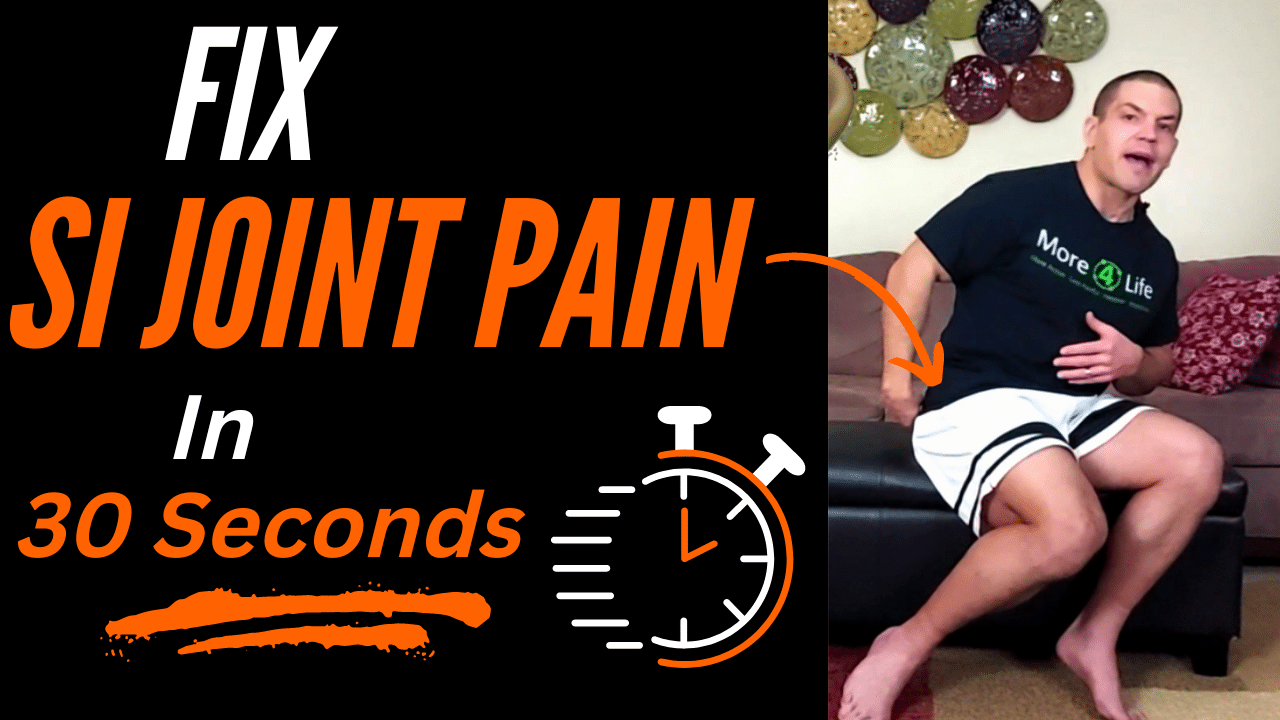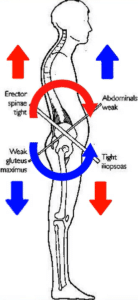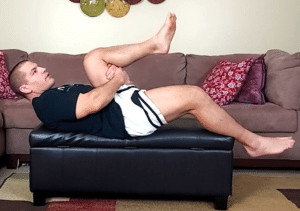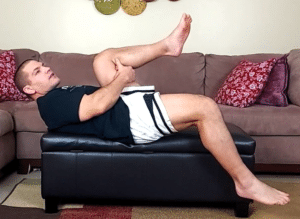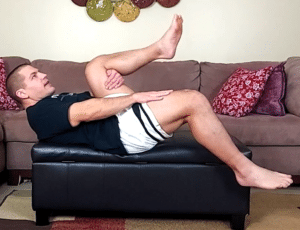Need To Fix SI Joint Pain Fast?
If you've had SI joint pain (sacroiliac joint pain), you know how incredibly disabling it can be. Watch the video to learn how to fix SI joint pain in 30 seconds, plus how to keep the pain from coming back in the future

What Causes SI Joint Pain?
The SI joints, are the joints between your lower spine (sacrum) and your two pelvic bones (ilia). The pelvic bones can be rotated or get stuck slightly out of place.
It doesn't take a large amount of movement to cause a problem in the SI joint. Under normal circumstances, the SI joints only rotate 1-3 degrees in most people.
The SI joints are strong, stabile joints covered by a lot of ligaments.
While these ligaments make your SI joint stabile, the also contain sensory receptors. That means that small joint dysfunctions can result in a lot of pain.
What Causes An SI Joint Dysfunction?
You can develop an SI joint dysfunction after a sudden injury such as falling on your bottom, being in a car accident, or even stepping down hard off of a curb.
Other times though, SI joint dysfunctions develop more gradually. This tends to happen in people with hypermobile joints.
Hypermobility is common in some genetic or rheumatological disorders such as Ehlers-Danlos Syndrome or rheumatoid arthritis.
Most commonly though, SI joint dysfunctions are seen in pregnant women or women who were recently pregnant. This happens due to an increase in the hormone relaxin, which makes your ligaments more "stretchy".
That's good in order to allow your pelvis to expand during delivery. However, it also comes with an increased risk of SI joint dysfunctions during and after pregnancy.
Women who have had multiple children are also at risk for developing SI joint dysfunctions due to their pelvis having to expand multiple times. This leave their pelvic ligaments more stretched out.
Just hypermobile ligaments on their own though usually don't cause an SI joint dysfunction.
There also has to be a muscle imbalance around the SI joints in order to "pull" them out of place.
Muscles That Affect Your SI Joints
The main muscles that affect your SI joints are your:
- Hip flexor muscles (rectus femoris and iliopsoas muscles)
- Abdominal muscles
- Hip extensor muscles (gluteus maximus and hamstrings)
- Lumbar extensor muscles
These muscles can rotate your SI joint forwards or backwards depending on which muscles are too stiff.
How To Determine Which Way Your SI Joint Is Rotated
Before you can fix SI joint pain, you first need to figure out which direction the SI joint is rotated. Fortunately, there are some simple muscle flexibility tests you can do at home to figure that out.
Hip flexor length test
Tp test the length of your hip flexors, lay down on a bed or couch and bring both knees up to your chest.
Let one leg fall down of the side of the bed or couch.
If one hip flexor is tighter than the other and that happens to be on your sore side, then your SI joint is probably rotated in a forward direction.
Hamstring length test
To test he length of your hamstrings, lay on your back and bring one leg up to 90 degrees of hip bend.
Straighten your knee as far as you can.
Normally your knee should be able to get nearly straght.
If one hamstring is tighter than the other and it's on your sore side, then you SI joint is likely rotated backwards.
How To Fix SI Joint Pain In 30 Seconds
How To Fix A Forward Rotated SI Joint In 30 Seconds
If your SI joint is rotated in a forward position, you want to rotate it in a backwards direction. You can do this by:
- Laying down on a bed or couch
- Bring your painful leg up towards your chest to rotate the SI joint in a backwards direction
- Let the other leg drop down
- Pull the leg up towards your chest as far as you can comfortably
- Push against your hands for resistance for about 5 seconds
- Relax and pull the leg closer to your chest
- Repeat 3-5 times.
(The picture above shows how to fix a left SI joint forward rotation)
This 30-second fix can bring your SI joint back into place where it's supposed to be and help relieve the pain if you have a forward rotation of your SI joint.
But what if your SI joint is rotated backward?
How To Fix A Backward Rotated SI Joint In 30 Seconds
To fix a backward rotated SI, start by hanging your sore leg off the bed with your other knee pulled up to your chest.
Then you can follow one of two methods:
Method 1
- Pull your heel down towards the ground for 5 seconds.
- Relax and allow your leg to drop keeping the other knee pulled up towards your chest.
- Repeat 3-5 times.
This will rotate your SI joint in a forward direction.
(Pictures above and below are for a right SI joint problem)
Method 2
- Instead of pulling your heel to the floor, place one hand on top of your thigh and push against your hand while holding your other leg to your chest with your other hand.
- Push for 5 seconds and then relax.
- Repeat this movement 3-5 times.
This technique uses the tension in your hip flexor muscles to pull your SI joint forwards.
See the video at the top of this page for more details on how to do all of these quick-fix techniques for SI joint pain.
Preventing Future SI Joint Problems
Once you've gotten rid of you SI joint pain, you probably want to keep it from coming back in the future, right?
In order to prevent future SI joint problems, it is important to address muscle imbalances that caused the SI joint dysfunction in the first place.
For example, if you hip flexor muscles are too stiff, you want to stretch your hip flexors.
If your hamstring muscles are too stiff, you want to stretch your hamstrings.
Additionally, it's usually helpful to strengthen your glutes and and abdominal muscles to stabilize your SI joints. Read my post on Stretches For SI Joint Pain to learn more.
Need Help To Fix SI Joint Pain?
If you're experiencing severe or chronic SI joint pain, it's probably time to get help.
Getting help from a professional who's experienced in treating SI joint pain can help you get rid of your SI joint pain faster.
If you'd like some help to figure out what's causing your SI joint pain, how to fix it, and how to keep the pain from coming back, tap the button below to request an appointment with one of our specialists.

